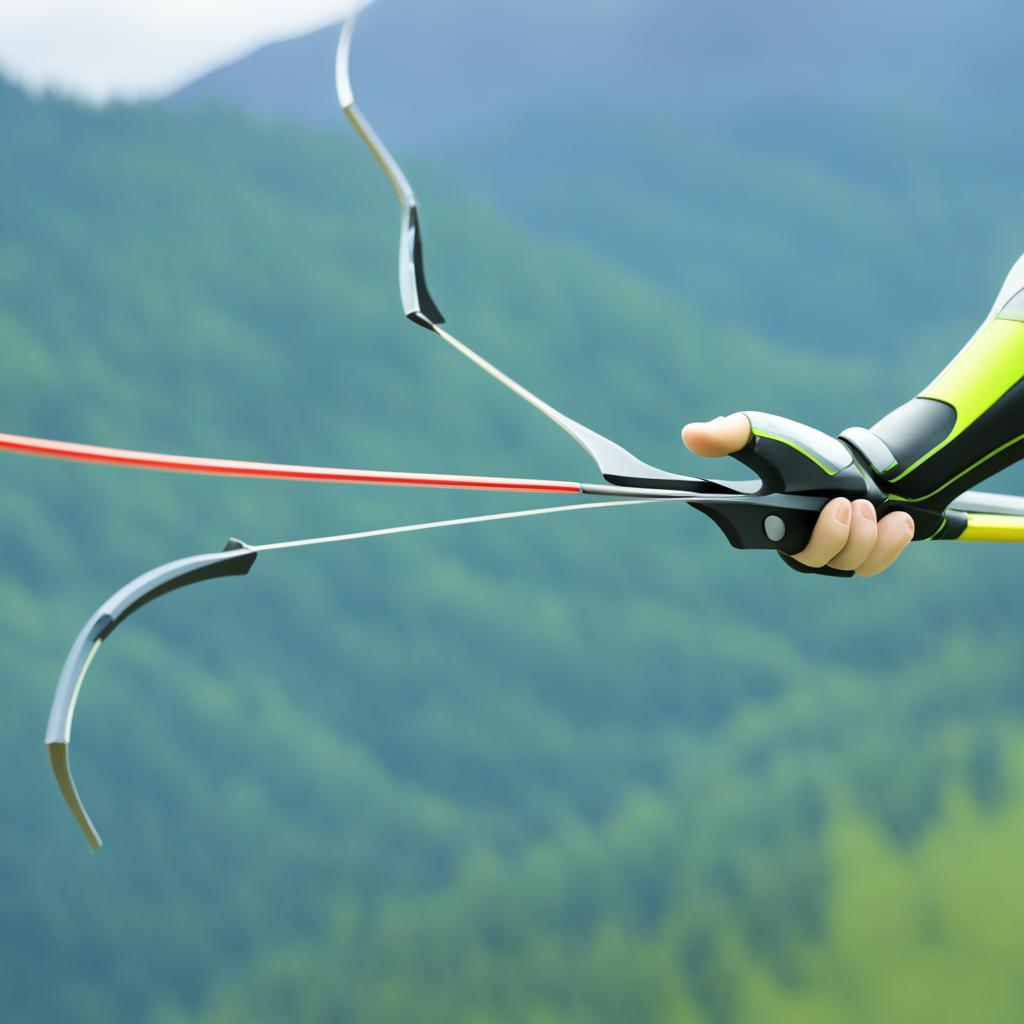Have you ever wondered how fast an arrow can travel from a recurve bow? The answer may surprise you. While the speed at which an arrow travels is influenced by various factors, it is estimated that arrows can reach speeds between 150 to 225 feet per second (fps) or approximately 100 to 150 miles per hour (mph). But is arrow speed the only factor that determines the effectiveness of a shot?
In this article, we will explore the factors that influence arrow speed from a recurve bow, how arrow speed is measured and calculated, the impact of arrow speed on hunting performance, and even delve into the speeds of different types of bows. So, whether you’re an archery enthusiast or a curious mind, let’s uncover the truth behind arrow speed from a recurve bow.
Factors That Influence Arrow Speed from a Recurve Bow
When it comes to the speed at which an arrow travels from a recurve bow, several factors come into play. Understanding these factors can help you optimize your shooting performance and achieve the desired arrow speed.
One of the most influential factors is the draw weight of the bow. A recurve bow with a higher draw weight imparts more energy to the arrow, resulting in a faster arrow speed. With increased draw weight, the bow stores more energy, which is then transferred to the arrow upon release.
Another factor that affects arrow speed is the draw length of the bow. A longer draw length allows for a greater transfer of energy to the arrow, resulting in higher arrow speed. This is because a longer draw length gives the bow more time to accelerate the arrow before it leaves the string.
The weight of the arrow also plays a crucial role in determining its speed. Lighter arrows tend to travel faster than heavier arrows. This is because lighter arrows require less energy to accelerate and maintain higher velocities throughout their flight.
In addition to these primary factors, other elements can influence arrow speed. The design of the bowstring, including its material and construction, can affect the efficiency of energy transfer from the bow to the arrow. Proper lubrication of the bowstring can reduce friction and enhance the arrow’s speed. Additionally, external factors such as weather conditions, including wind and temperature, can impact arrow speed.
By finding the right balance between draw weight, draw length, arrow weight, and other influencing factors, you can optimize the arrow speed from your recurve bow for accurate and effective shooting.
| Factors | Impact on Arrow Speed |
|---|---|
| Draw Weight | Increased draw weight results in faster arrow speed. |
| Draw Length | Longer draw length allows for a greater transfer of energy, resulting in higher arrow speed. |
| Arrow Weight | Lighter arrows tend to travel faster than heavier arrows due to lower energy requirements. |
| Bowstring Design | Efficient bowstring design enhances energy transfer and arrow speed. |
| Lubrication | Proper lubrication reduces friction, contributing to faster arrow speed. |
| Weather Conditions | External factors such as wind and temperature can impact arrow speed. |
How Arrow Speed is Measured and Calculated

Arrow speed measurement and calculation are essential for archers seeking to optimize their shooting performance. It gives valuable insights into the effectiveness of their recurve bow and helps make necessary adjustments. Arrow speed from a recurve bow is typically measured in feet per second (fps). Let’s explore the methods and calculations used to determine arrow speed accurately.
There are several methods and equipment available to measure arrow speed. Optical chronographs and Doppler chronographs are commonly used for this purpose. These devices utilize sensors and timing mechanisms to calculate the speed of the arrow as it passes through the measuring apparatus, providing precise and reliable results.
In addition to measuring arrow speed directly, archers can also estimate it using calculations and formulas based on various factors. These factors include draw length, draw weight, and arrow weight. By inputting these values into the appropriate formulas, archers can obtain a rough estimate of the speed at which their arrows are traveling.
Calculating arrow speed allows archers to understand how different factors impact their shooting performance. It enables them to fine-tune their bows and arrows for optimal accuracy and effectiveness. By adjusting variables such as draw length, draw weight, and arrow weight, archers can optimize arrow speed for their specific needs and shooting style.
The Importance of Arrow Speed Calculation
Arrow speed calculation is crucial for archers looking to achieve consistent and accurate shots. It helps them understand the capabilities of their recurve bow, identify areas for improvement, and make informed decisions about equipment and shooting techniques. By knowing their arrow speed, archers can assess the effectiveness of their shots and work towards achieving their desired shooting goals.
Understanding arrow speed measurement and calculation is an essential part of the archery process. It empowers archers to optimize their recurve bow setup and shooting technique, ultimately enhancing their overall performance. By harnessing the knowledge gained from arrow speed measurement and calculation, archers can take their shooting to new heights.
Arrow Speed from Different Types of Bows

Arrow speed is an essential factor to consider when choosing a bow for target shooting or hunting. The type of bow you use can have a significant impact on the speed at which your arrows travel. Let’s explore the arrow speeds of different types of bows:
Recurve Bow
Arrows shot from a recurve bow typically travel at speeds ranging from 150 to 225 feet per second (fps). The recurve bow’s design allows for an efficient transfer of energy to the arrow, resulting in respectable arrow speeds.
Compound Bow
A compound bow, known for its mechanical advantage, can propel arrows at higher speeds compared to a recurve bow. On average, compound bows have arrow speeds ranging from 300 to 340 fps. The combination of pulleys, cables, and cams in a compound bow enables greater power and speed.
Crossbow
Crossbows offer a unique shooting experience and have arrow speeds that range from 200 to 240 fps. The design of a crossbow allows for increased accuracy and ease of use, making it a popular choice for hunting enthusiasts.
Longbow
The longbow, with its traditional design, may not rival the speeds of recurve or compound bows. Arrows shot from a longbow typically travel at speeds ranging from 175 to 214 fps. Despite slightly slower speeds, many archers appreciate the craftsmanship and historical significance of the longbow.
It’s important to note that these arrow speeds are approximate and can vary depending on factors such as draw weight, draw length, arrow weight, and individual bow specifications. Experimenting with different setups and finding the right combination of factors will help optimize arrow speed and overall bow performance.
Understanding the arrow speeds of different types of bows is crucial in selecting the one that best suits your needs. Whether you prefer the simplicity of a recurve bow or the advanced technology of a compound bow, knowing the speeds at which your arrows will travel can enhance your shooting experience.
The Impact of Arrow Speed on Hunting Performance
The speed at which an arrow travels can have a significant impact on hunting performance. When an arrow is propelled at a faster speed, it follows a flatter trajectory and experiences less deviation from wind resistance. This results in increased accuracy and more effective shot placement, which are crucial for successful hunting experiences.
However, it is important to note that arrow speed alone does not guarantee a successful outcome. Factors such as shot placement, arrow weight, and penetration also play crucial roles in hunting performance. It is essential to find the right balance between arrow speed and these other factors to ensure an ethical and humane hunting experience.
While higher arrow speeds can provide advantages, it is paramount for hunters to prioritize accuracy, shot placement, and ethical hunting practices. While achieving higher arrow speeds can be advantageous in certain situations, it is essential to remember that a well-placed and accurate shot is ultimately more important than sheer speed.
FAQ
Q: How fast does an arrow travel from a recurve bow?
A: The speed at which an arrow travels from a recurve bow can vary depending on several factors. It is estimated that arrows can travel between 150 to 225 feet per second (fps) or approximately 100 to 150 miles per hour (mph).
Q: What factors influence arrow speed from a recurve bow?
A: Several factors can influence the speed at which an arrow travels from a recurve bow, including draw weight, draw length, arrow weight, and other variables specific to each individual bow.
Q: How is arrow speed from a recurve bow measured and calculated?
A: Arrow speed from a recurve bow is typically measured using optical or Doppler chronographs. There are also calculations and formulas that can be used to estimate arrow speed based on factors such as draw length, draw weight, and arrow weight.
Q: How does arrow speed from a recurve bow compare to other types of bows?
A: Arrows from a recurve bow typically travel at speeds between 150 to 225 fps. Compound bows can shoot arrows at higher speeds ranging from 300 to 340 fps on average. Crossbows have speeds that range from 200 to 240 fps, while longbows range from 175 to 214 fps.
Q: What impact does arrow speed have on hunting performance?
A: Arrow speed can significantly impact hunting performance by increasing accuracy, shot placement, and penetration. However, other factors such as shot placement, arrow weight, and ethical hunting practices are equally important for a successful outcome.
